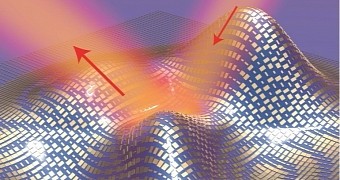Invisibility cloaks are some of the main trademarks of science fiction and fantasy films, and they have long been considered a mirage for scientists trying desperately for years to bend light around objects enough to literally make them invisible.
Recently, this effort starts to get closer to its intended goal, and although we won't be getting ourselves dressed in invisible clothes overnight, we won't be far from such a fantasy scenario either. The folks at Berkley Lab and the University of California (UC) Berkeley have devised an ultra-thin invisibility "skin" cloak that can bend around the shape of an object and hide it from the visual detection and, obviously, visible light.
Basically, the skin comprises in brick-like blocks of gold nanoantennas only 80 nanometers thick that were wrapped, in the experiments, around a few biological cells and shaped with multiple bumps and dents. The surface of the skin was engineered to deflect and reroute the light reflected so that the object remained invisible to optical detection when the cloak was activated.
What makes this design unique is not necessarily its capability to bend and reroute light but its ability to scale up easily for larger objects, and, yes, the fact that it basically looks and acts like a coat and will be able to hide macroscopic objects as well.
Although hiding yourself under this might still not be possible in the next year or two, tiny electronics and computer objects can be hidden, while microscopic entities can already pass unnoticed once this device is activated.

 14 DAY TRIAL //
14 DAY TRIAL // 